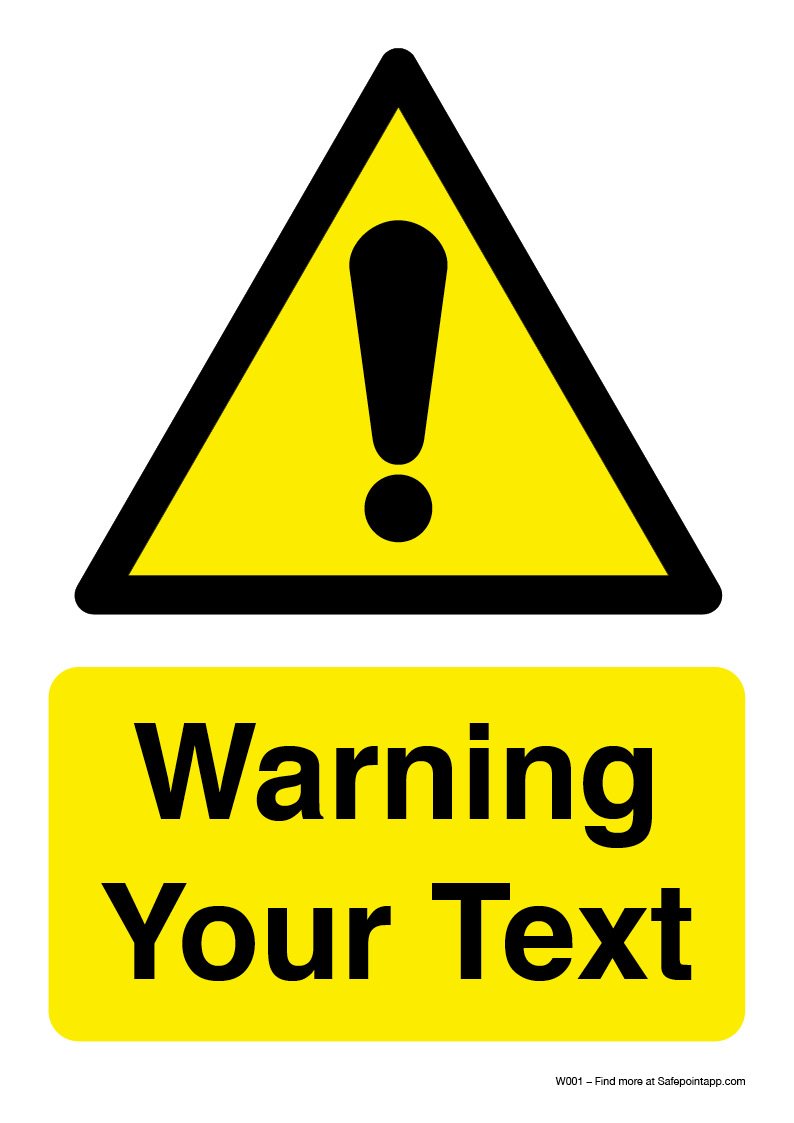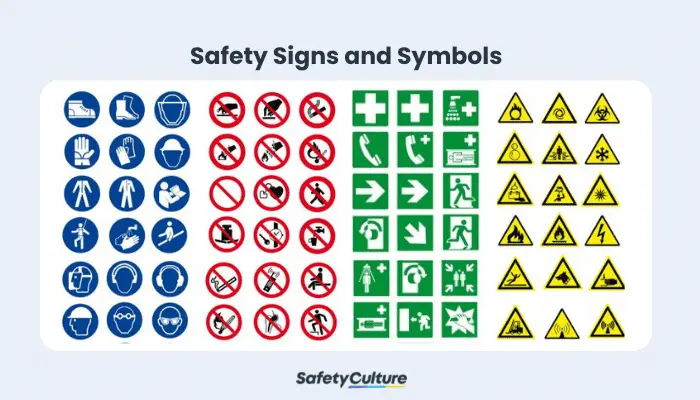Choosing the Right Safety Signage: Key Elements for Workplace Safety Success
Choosing the Right Safety Signage: Key Elements for Workplace Safety Success
Blog Article
Necessary Safety Signs for a Much Safer Work Environment
In any kind of workplace, the presence of crucial safety and security indications is crucial for fostering a setting where hazards are effectively interacted and mitigated. Recognizing the nuances of these security signs is critical, as their proper implementation can make all the distinction in emergency situations and daily procedures.
Kinds Of Safety And Security Indications
There are four primary kinds of security indicators used in the office: warning indications, regulatory indicators, useful signs, and emergency situation signs. Each kind offers an unique objective in promoting security and making sure compliance with developed guidelines.
Warning indicators are developed to alert employees to potential risks or dangerous conditions. These signs generally include bold shades and signs to share immediate attention, such as "Care: Damp Floor" or "Threat: High Voltage," allowing workers to work out ideal caution.
Regulative indications establish guidelines and regulations that need to be followed to maintain security. These signs typically indicate mandatory activities or restrictions, such as "Construction Hats Needed" or "No Cigarette smoking." Conformity with these guidelines is important for office security and preventing fines.
Insightful indicators provide basic information or instructions that add to a much safer atmosphere (Safety Signs). Examples include directional indicators, which assist individuals to departures or emergency treatment kits, and instructional indications that detail proper equipment usage
Emergency signs are important throughout crises, supplying details regarding discharge paths, emergency exits, and first help stations. These signs are purposefully positioned to make certain fast accessibility to essential information, facilitating a swift feedback in emergency situations.
Significance of Security Signage
Effective safety and security signage is crucial in the workplace as it plays an important role in avoiding mishaps and advertising a culture of security. Clear and noticeable safety and security signs connect essential details that assists employees browse their atmosphere safely. They work as continuous reminders of potential dangers, guaranteeing that safety and security remains a top priority in day-to-day operations.
The relevance of security signs prolongs beyond plain communication; it fosters accountability and boosts recognition amongst workers. By offering assistance on safe techniques and emergency procedures, safety and security signs equip employees to take positive steps in hazardous circumstances. This proactive approach not only alleviates risks but additionally cultivates a collective duty for security within the workforce.
In addition, well-placed safety and security signs can considerably reduce complication during emergencies, routing individuals to leaves or secure areas successfully. In environments where distractions are usual, such as construction sites or manufacturing centers, the presence of clear safety and security signage is much more vital. It aids maintain focus on safety methods and decreases the probability of human error.
Required Security Indicators
Obligatory safety and security signs are crucial parts of office security methods, created to share essential details that should be stuck to for the wellness of all employees. These indicators interact instructions that are lawfully required to ensure conformity with safety regulations, therefore promoting a much safer work atmosphere.
Generally, obligatory safety and security indicators feature a particular shade scheme and icons. Typical instances include indicators showing the need for personal protective tools (PPE), such as difficult hats, security goggles, or ear security.
Regular audits and training sessions can help strengthen the value of these signs, promoting a culture of safety and security within the work environment. Ultimately, the reliable implementation of necessary safety signs plays an important role in lessening threats and enhancing overall worker safety.
Caution and Care Indications

Warning signs usually include a yellow history with a black icon or message, suggesting a situation that might trigger injury if not approached with caution. Instances consist of cautions about electric hazards, damp floors, or equipment in operation. These signs are necessary in areas where the danger of injury is raised, ensuring staff members are gotten ready for feasible risks.

Both warning and care signs play a vital duty in cultivating a culture of safety within the office. By successfully interacting risks, these indications equip employees to make educated decisions, inevitably adding to a safer working environment.
Emergency Situation and Exit Indications
Emergency situation and exit indicators are important components of workplace safety and security, supplying essential assistance throughout times of situation. These indications Health and Safety Signs straight staff members and visitors to safety courses, making certain swift evacuation in emergencies such as fires, all-natural catastrophes, or chemical spills. Their exposure and quality can dramatically decrease complication and panic, which prevail during such events.
Emergency signs typically suggest the place of firefighting devices, initial aid stations, and emergency situation departures. They are created with universally identified shades and symbols, mostly making use of green for risk-free locations and red for threat or emergency devices. Leave indicators, particularly, should be lit up and tactically positioned to guarantee they are quickly recognizable also in low visibility problems.
Routine assessments and upkeep of these indicators are crucial to guarantee their performance. Educating workers on the places and significances of emergency and leave indications additional boosts work environment safety and security.
Final Thought

By supplying guidance on risk-free methods and emergency treatments, safety indications equip employees to take proactive actions in hazardous circumstances. Ultimately, the effective application of obligatory safety indicators plays an important function in minimizing risks and improving general employee safety.
Emergency situation and leave indications are crucial elements of work environment safety, offering crucial support during times of dilemma. These indications direct employees and visitors to safety and security paths, ensuring swift emptying in emergencies such as fires, natural calamities, or chemical spills. Training staff members on the places and meanings of emergency situation and exit indicators further improves work environment safety.
Report this page